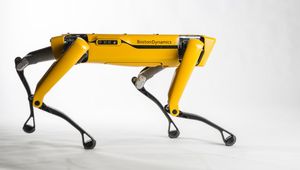Dual-Axis Tilting Quadcopter
An actuation concept to enhance the performance characteristics of the conventional under-actuated quadcopter. This actuation strategy has been developed in order to increase the agility and control bandwidth of conventional quadcopters in outdoor scenarios. The introduction of dual-axis tilting to the propellers produces an over-actuated quadcopter with the ability to have 12 control inputs with 6 control outputs. The tilting of propellers provides the necessary gyroscopic effects to provide fast control and action. The proposed tilting rotor solution for quadcopter uses additional 8 servo motors that allow the rotors to tilt in both axes, an over-actuated system can potentially track an arbitrary trajectory over time.
Technical Specifications
| UAV Dimensions | 1048 |
| Weight | 4 |
| Endurance | 20 |
| Payload Capacity | 2 |
| Servomotors | 8 |
| Rotor motors | 4 |
| Propellors | 4 |
| RC Controller | |
| Microcontroller | |
| Flight Control | |
| Manufacturing | |
| CAD design |
Overview
This actuation strategy has been developed in order to increase the agility and control bandwidth of conventional quadcopters in outdoor scenarios.
The introduction of dual-axis tilting to the propellers produces an over-actuated quadcopter with the ability to have 12 control inputs with 6 control outputs. The tilting of propellers provides the necessary gyroscopic effects to provide fast control and action. The proposed tilting rotor solution for quadcopter uses additional 8 servo motors that allow the rotors to tilt in both axes, an over-actuated system can potentially track an arbitrary trajectory over time.
The development of this concept is mainly based on the arm design of the quadcopter in which each arm is able to generate three-actuation independently, including the rotors to achieve differential thrusting and dual tilting mechanism to provide a broad range of control bandwidth.
References
Describes the design, modeling, simulation, and prototyping of the dual-axis tilting quadcopter. Also shows outdoor flight tests.

























